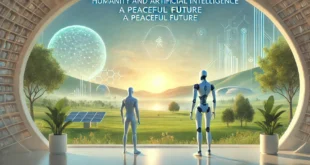Related Articles
Solar technology has rapidly evolved in recent years, driven by advancements in efficiency, affordability, and integration with smart systems. As we approach 2025, the solar industry is poised to redefine how we harness and utilize solar energy in our daily lives. Here’s an overview of what to expect:
1. Advances in Solar Panel Efficiency
By 2025, solar panels are expected to achieve unprecedented efficiency levels:
- Perovskite Solar Cells: These promise higher energy conversion rates, potentially exceeding 30%, while being lightweight and flexible.
- Bifacial Panels: Capable of capturing sunlight from both sides, these panels can increase energy output by up to 25%.
2. Integration with Smart Technology
Solar energy systems are becoming smarter, thanks to IoT and AI:
- Smart Grids: Solar panels will connect seamlessly with smart grids, optimizing energy distribution based on real-time demand.
- AI-Powered Monitoring: AI will analyze solar performance, predict maintenance needs, and maximize efficiency.
- Energy Storage Innovations: With advanced battery systems like Tesla’s Powerwall and beyond, storing solar energy for nighttime or cloudy days will be more efficient and cost-effective.
3. Cost Reductions and Accessibility
The cost of solar installation is expected to decline further due to:
- Improved Manufacturing: Mass production and new materials will lower costs.
- Government Incentives: Continued support through subsidies and tax credits will make solar more accessible to households and businesses.
4. Urban Integration
Solar technology will become more integrated into urban environments, including:
- Building-Integrated Photovoltaics (BIPV): Solar panels embedded into windows, facades, and roofs of buildings, blending aesthetics with functionality.
- Solar Roads: Experimental projects will lead to the adoption of solar-powered highways capable of generating electricity and charging electric vehicles.
5. Growth in Off-Grid Applications
By 2025, solar technology will play a crucial role in off-grid solutions:
- Rural Electrification: Portable solar systems will bring electricity to remote areas, transforming lives and local economies.
- Disaster Relief: Solar-powered devices and microgrids will provide critical energy during emergencies.
6. Solar-Powered Transportation
The transportation sector is embracing solar energy:
- Solar Cars: Vehicles equipped with solar panels, like the Lightyear 2, will offer extended ranges and reduced reliance on charging infrastructure.
- Solar-Powered Drones and Boats: These innovations will see broader adoption in commercial and recreational use.
7. Sustainability and Recycling
With solar adoption increasing, the industry will prioritize sustainability:
- Recycling Programs: Solar panel recycling initiatives will recover valuable materials, reducing waste.
- Eco-Friendly Materials: Panels will be made with greener, more recyclable components.
8. Solar Farms and Large-Scale Projects
Large-scale solar farms will dominate the renewable energy landscape:
- Floating Solar Farms: These installations on reservoirs and lakes will save land and increase energy output by cooling the panels.
- Hybrid Farms: Combining solar farms with agriculture to optimize land use, a practice known as agrivoltaics.
Challenges and Opportunities
While the future of solar technology is bright, challenges remain:
- Energy Storage Costs: Continued advancements in battery technology will be critical.
- Grid Integration: Expanding infrastructure to handle increased solar energy input is necessary.
- Public Awareness: Educating people about the benefits and affordability of solar energy will drive adoption.
Conclusion
By 2025, solar technology will not only transform energy generation but also play a pivotal role in achieving global sustainability goals. With innovations on the horizon, the solar revolution will continue to light the way toward a cleaner, greener future.
General Questions
- What is solar technology, and how does it work?
Solar technology converts sunlight into electricity using solar panels, typically through photovoltaic (PV) cells. - Why is solar energy considered a sustainable option?
Solar energy is renewable, abundant, and produces no greenhouse gas emissions, making it environmentally friendly. - What advancements are expected in solar technology by 2025?
Key advancements include higher efficiency panels, smarter energy management systems, and more affordable solar solutions.
Efficiency and Performance
- What is the efficiency of modern solar panels?
Most modern panels achieve efficiency levels of 20–25%, but next-generation technologies like perovskite solar cells could exceed 30% by 2025. - Do solar panels work during cloudy days or at night?
While solar panels produce less energy on cloudy days, battery storage systems can store excess energy for use at night. - What is bifacial solar technology?
Bifacial solar panels capture sunlight from both sides, increasing energy production compared to traditional panels.
Costs and Accessibility
- How much does it cost to install solar panels in 2025?
Costs vary, but prices are expected to continue decreasing due to advancements in manufacturing and economies of scale. - Are there government incentives for installing solar systems?
Many governments offer subsidies, tax credits, or rebates to make solar energy more affordable. - How long does it take for solar panels to pay for themselves?
The payback period typically ranges from 5–10 years, depending on energy savings and incentives.
Technology and Innovation
- What are perovskite solar cells, and why are they important?
Perovskite cells are a new type of solar technology offering higher efficiency, flexibility, and lower production costs. - What is building-integrated photovoltaics (BIPV)?
BIPV refers to solar panels integrated into building materials, such as windows, roofs, and facades, combining aesthetics with functionality. - What are floating solar farms?
Floating solar farms are solar installations on water bodies that save land and increase efficiency by cooling the panels.
Energy Storage and Usage
- Why is energy storage important for solar systems?
Storage systems like batteries allow users to store excess solar energy for use during nighttime or power outages. - What are the latest innovations in solar energy storage?
Advancements in lithium-ion and solid-state batteries are making storage more efficient, durable, and affordable. - Can solar energy power an entire home or business?
Yes, with a well-sized system and sufficient storage, solar energy can meet 100% of energy needs.
Maintenance and Longevity
- How long do solar panels last?
Solar panels typically last 25–30 years, with minimal efficiency loss over time. - What maintenance is required for solar panels?
Panels require occasional cleaning and inspections to ensure optimal performance. - Do solar panels work in extreme weather conditions?
Most panels are designed to withstand hail, snow, and high winds, but proper installation and quality materials are crucial.
Applications
- What are the uses of solar energy besides powering homes?
Solar energy is used for water heating, transportation (solar cars), powering electronics, and off-grid systems in remote areas. - Are solar-powered vehicles practical?
Solar vehicles, such as cars and boats, are becoming increasingly viable due to advances in panel efficiency and design.
Sustainability and Recycling
- What happens to old solar panels?
Recycling programs recover valuable materials like silicon and glass, reducing waste and environmental impact. - How eco-friendly are modern solar panels?
Manufacturers are increasingly using sustainable materials and production methods, making panels more environmentally friendly. - Does solar energy contribute to reducing carbon footprints?
Yes, solar energy significantly reduces reliance on fossil fuels, cutting greenhouse gas emissions.
Future Trends
- What is the future of solar technology after 2025?
Innovations like transparent solar panels, flexible materials, and quantum dot technology will drive further adoption. - Will solar energy replace traditional power grids?
While it’s unlikely to completely replace traditional grids, solar energy will play a major role in creating hybrid and decentralized energy systems.
 The Random Collective Where Curiosity Meets Creativity
The Random Collective Where Curiosity Meets Creativity





